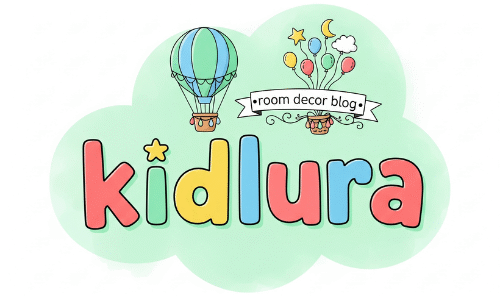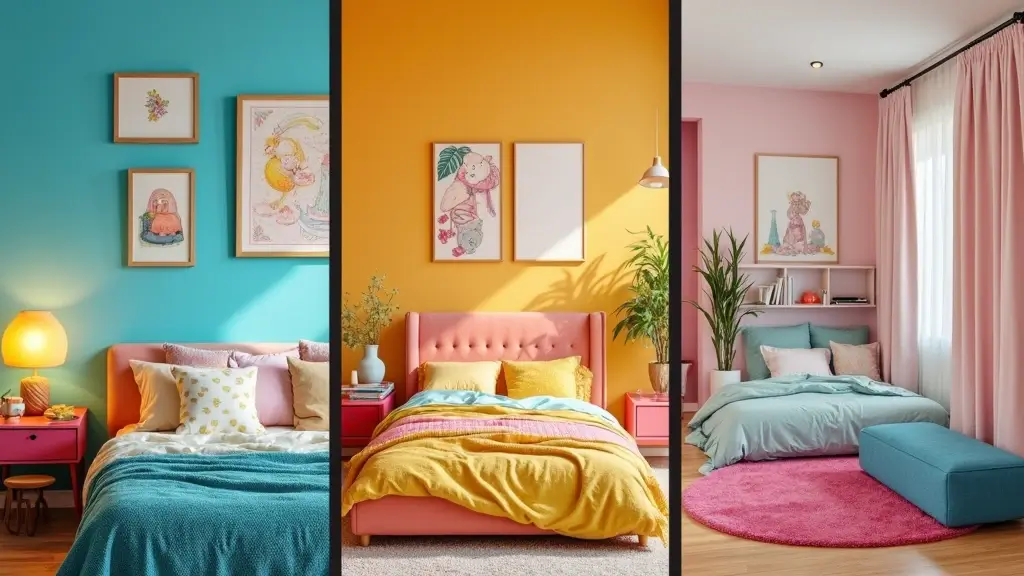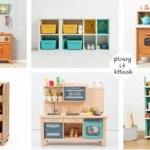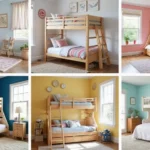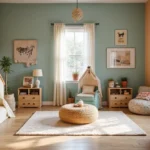Creating a shared bedroom for siblings can be a balancing act of keeping their individuality while fostering a sense of unity.
With kids often having different tastes and personalities, designing a divided bedroom can feel challenging.
But fear not! We’ve gathered an array of creative ideas that beautifully split the space while maintaining a cohesive look. From color schemes to furniture solutions, these divided bedroom concepts will ensure both kids feel at home. Get ready to explore these inspiring and practical designs that will make sibling sleepovers a dream come true!
1. Matching Color Palettes for Unity
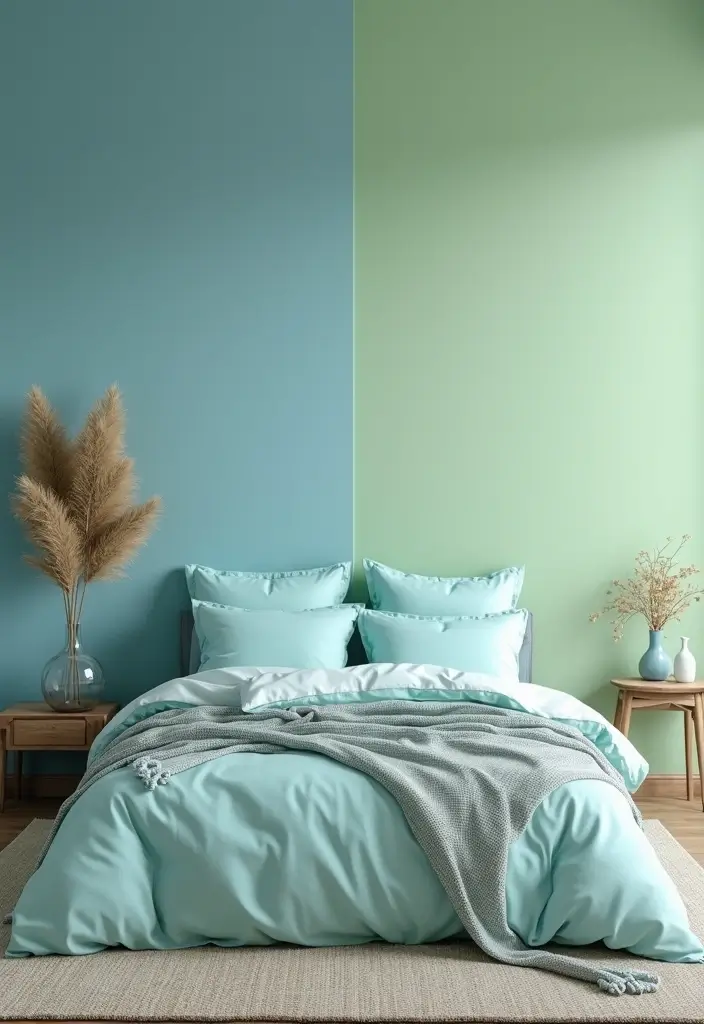
One of the best ways to visually connect two areas in a divided bedroom is through matching color palettes.
Choose colors that harmonize with each other, such as soft pastels or vibrant jewel tones. This approach allows each sibling to customize their space while keeping a unified look.
You can use the same color for bedding and accessories, while allowing each child to choose their own wall decor.
For instance, if one child loves blue and the other prefers green, incorporating both colors in the curtains and throws can beautifully tie the room together.
for executing this idea include:
– Select a dominant color for the walls.
– Use accent colors to differentiate spaces.
– Incorporate shared decor elements like rugs or artwork to emphasize unity.
2. Creative Room Dividers
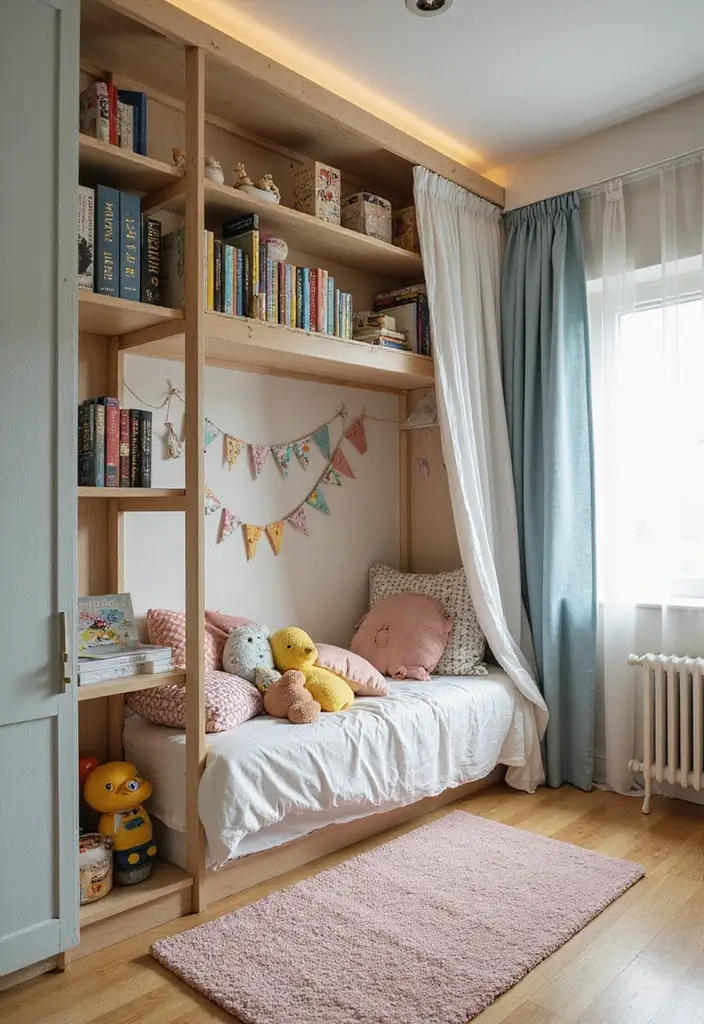
A room divider can be both functional and stylish!
From bookshelf dividers filled with books and toys to decorative screens that add a playful touch, the right divider will give each child their own nook.
Consider open shelving units that not only function as a partition but also provide storage solutions for books and toys.
Another fun idea is to use curtains or fabric panels that can be drawn for privacy during quiet time.
Make sure the divider complements the room’s overall aesthetic—perhaps a wooden divider in a rustic-themed space or colorful fabric panels in a more whimsical room.
Here are some additional tips:
– Ensure the divider is stable and safe.
– Involve the kids in the choice of style.
– Keep it low enough to maintain an open feel.
3. Personalized Bedding

Bedding is a fantastic way to express individuality without sacrificing harmony.
Opt for matching styles but with different colors or patterns that reflect each child’s personality.
For example, one sibling might love superheroes while the other prefers floral designs; yet, using the same style of comforter will keep the room cohesive.
Another approach is to use monogrammed pillows with their initials to add a personal touch while keeping a uniform look.
Mix and match sheets and blanket throws that complement each other to keep the visual flow intact.
Things to consider:
– Choose comforter styles that are easy to wash.
– Coordinate colors that align with your chosen room palette.
– Incorporate fun textures to add depth.
4. Dual Desks with a Shared Feel
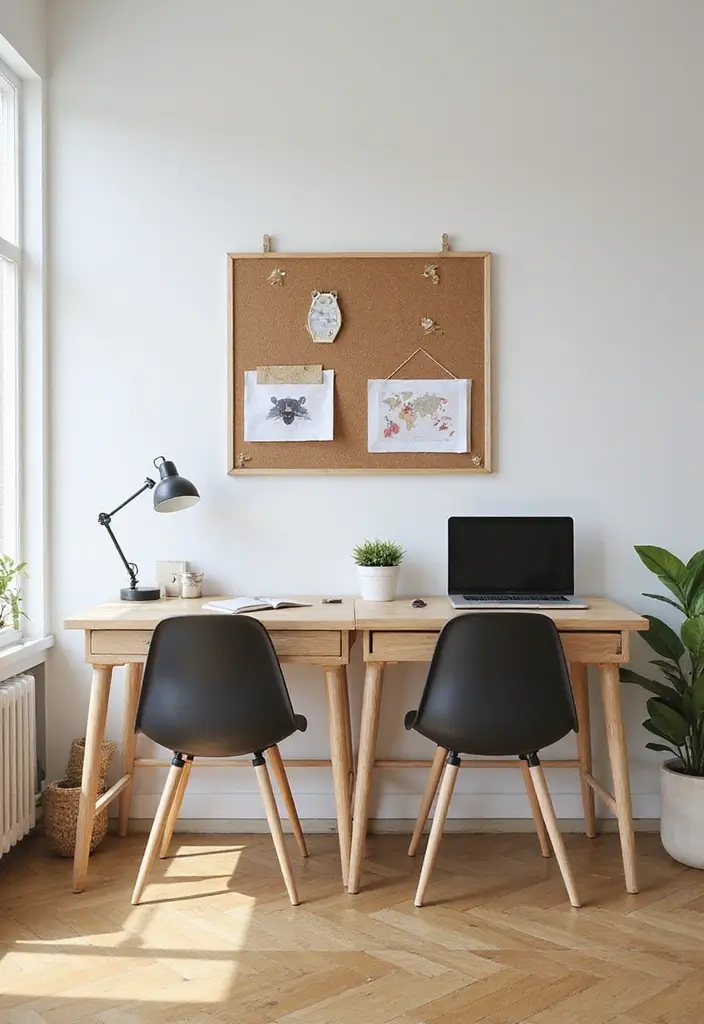
Study time should be productive and enjoyable, so why not create a homework station that caters to both kids?
Instead of a single desk, opt for two smaller desks placed side by side.
Choose similar styles but allow each child to decorate their desk with personal items. This setup promotes teamwork while allowing individuality.
Consider a shared bulletin board above the desks to keep things organized and encourage collaboration on assignments or projects.
for a successful dual desk setup:
– Ensure both desks have good lighting.
– Use matching desk accessories for a cohesive look.
– Incorporate storage solutions like drawer organizers for each child.
5. Themed Half-Walls
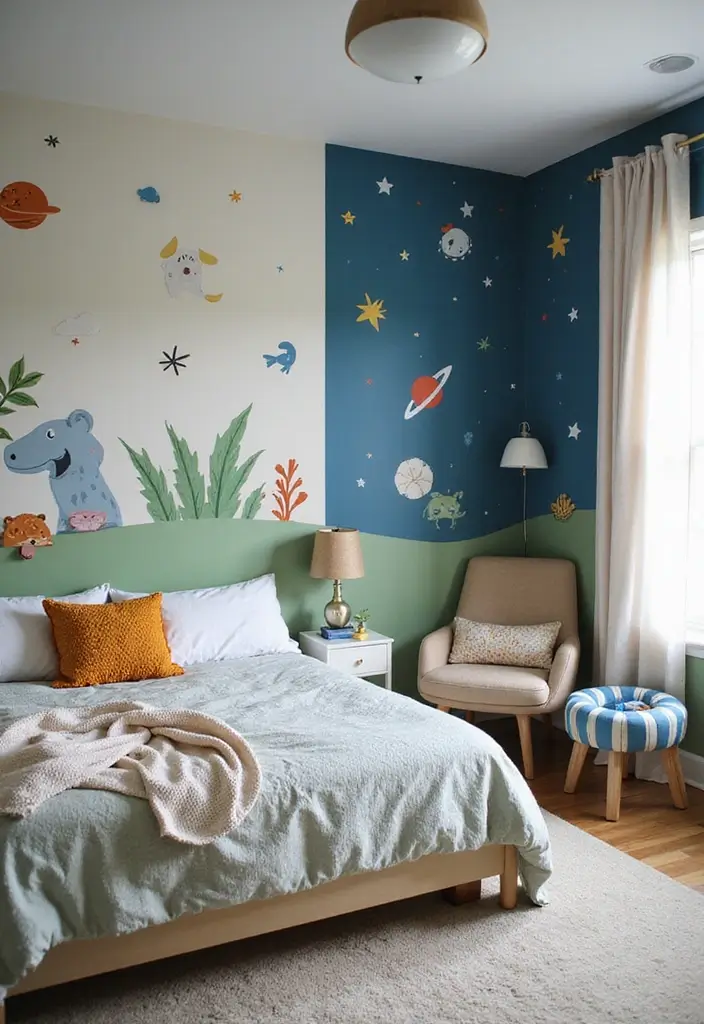
For a unique and fun twist, consider painting half-walls with different themes that correspond to each child’s interests.
This design lets each sibling express their personality while keeping the overall room feeling united.
For instance, one side could feature a jungle theme with greens and browns, while the other could showcase a space theme in blues and purples.
Use decals or stencils to enhance the theme, making it personal yet cohesive.
Here are some ideas to get you started:
– Use a continuous line or pattern along the top to tie the two themes together.
– Choose colors that harmonize despite the different themes.
– Add shared elements like matching curtains to create balance.
6. Shared Floor Space with Distinct Areas

Creating distinct zones on the floor can be an excellent way to maintain harmony in a divided room.
Use area rugs to define each child’s space. For instance, a round rug for one child and a square one for the other can delineate their corners while still connecting the room visually.
Choose rugs with similar patterns or colors to keep the aesthetic consistent.
Incorporate multifunctional furniture, like ottomans or storage benches that can be used by both kids.
Additionally, make sure there’s a common play area in the center, where they can share toys or play games together.
Consider these tips:
– Ensure rugs are easy to clean.
– Keep a neutral color for shared areas.
– Use floor cushions to make the space inviting.
7. Overhead Storage Solutions
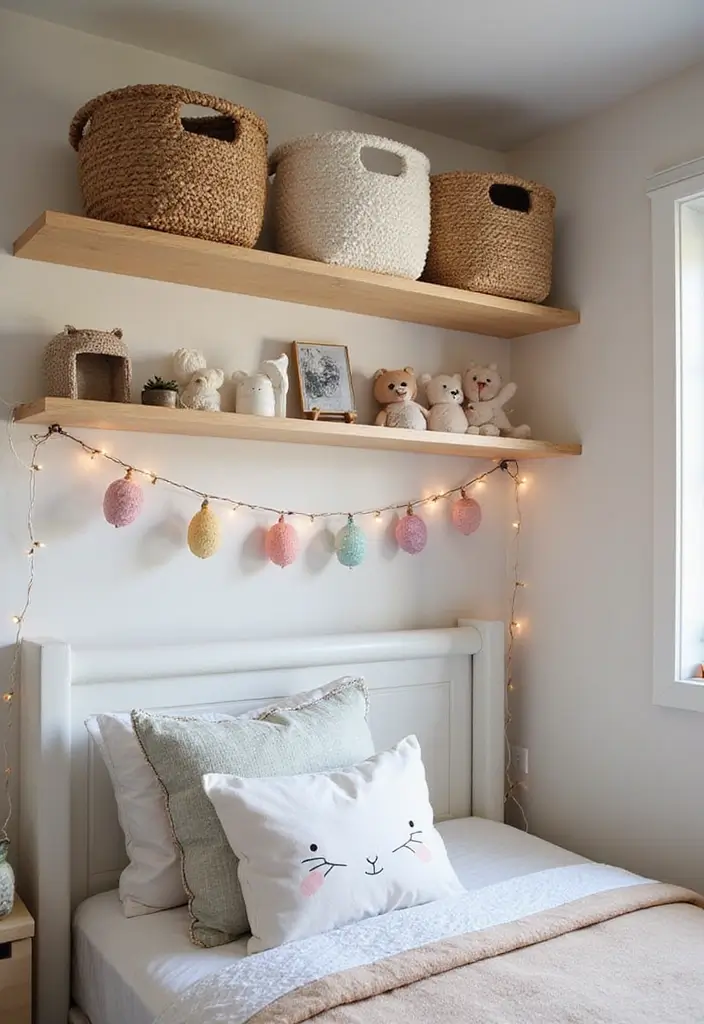
Maximizing vertical space is crucial in any shared bedroom.
Incorporate overhead storage options like shelves or hanging organizers to keep the floor space clear.
Let each child have their own designated shelves for books, toys, and personal items, while ensuring the design flows seamlessly.
Use decorative baskets on the shelves for easy organization and visual appeal.
Adding a playful touch, consider hanging fairy lights around the shelves for a magical atmosphere.
for effective overhead storage:
– Ensure shelves are easily accessible.
– Use matching bins or boxes for a coherent look.
– Incorporate fun labels for each child’s belongings.
8. Colorful Wall Art
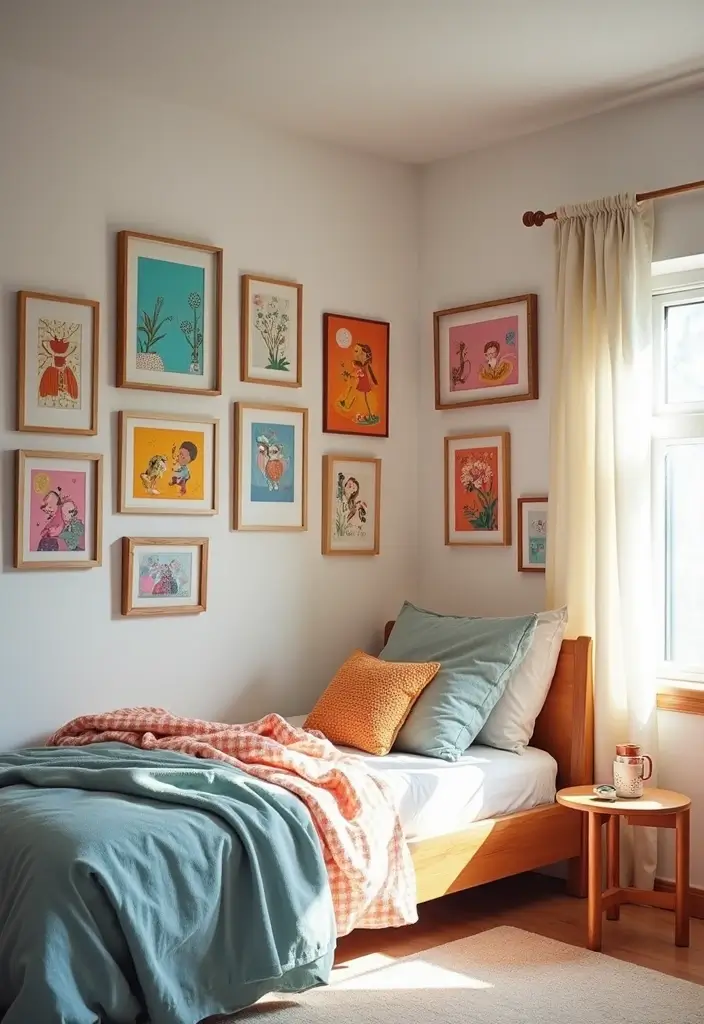
Art can serve as a fantastic unifier in a divided bedroom.
Choose colorful wall art that each child loves but ensures they complement each other.
Consider a gallery wall where each child picks a few pieces of art that reflect their interests and personality, yet coordinate in style or color.
Using frames in similar colors can add a cohesive touch, while different art pieces show individuality.
Here are some ideas for incorporating art:
– Use removable wall stickers for easy updates.
– Consider a shared mural that incorporates elements from both children’s interests.
– Encourage kids to create their own artwork for a personal touch.
9. Bed Placement for Privacy
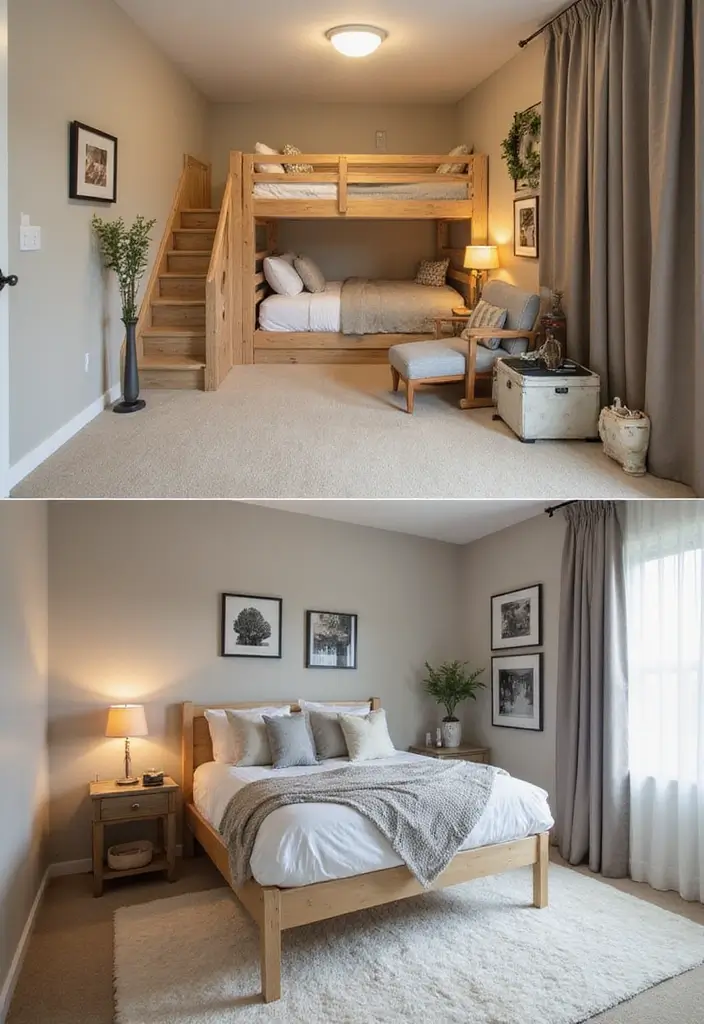
The arrangement of beds plays a significant role in the overall feel of a divided space.
Placing beds in opposite corners creates a sense of privacy and personal space.
Consider using lofted beds to maximize floor space underneath for play or study areas.
Another option is to use a bunk bed, where the bottom bunk can serve as a cozy reading nook.
Ensure that side tables and lamps are available for each child, maintaining balance in the layout.
Here are some considerations for bed placement:
– Ensure there’s enough space for activities between beds.
– Keep safety in mind with lofted or bunk beds.
– Coordinate bed linens for a unified look.
For a divided bedroom kids will love, place beds in opposite corners for privacy. It’s the perfect way to create cozy nooks while maximizing space for play and study!
10. Fun and Functional Furniture
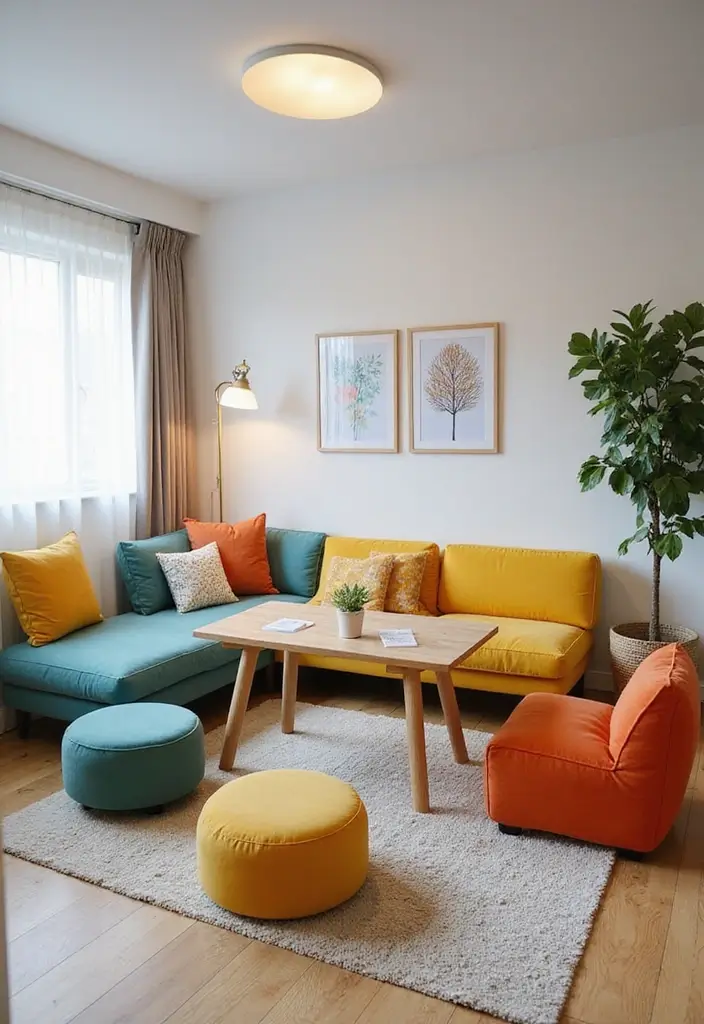
Choosing furniture that is both fun and functional is crucial for a shared bedroom.
Select pieces that can adapt as the kids grow, like adaptable tables or convertible sofas.
Consider using colorful chairs or bean bags that invite playfulness while serving as seating options.
Incorporating multi-use furniture, such as a bed with built-in drawers for storage, streamlines the space and keeps it tidy.
Additionally, try to select furniture that can double as play areas, like a play table that can be used for crafts or homework.
Here’s what to keep in mind:
– Pick furniture with smooth edges for safety.
– Choose colors that align with the overall theme.
– Ensure that items are sturdy and durable.
11. Layered Lighting
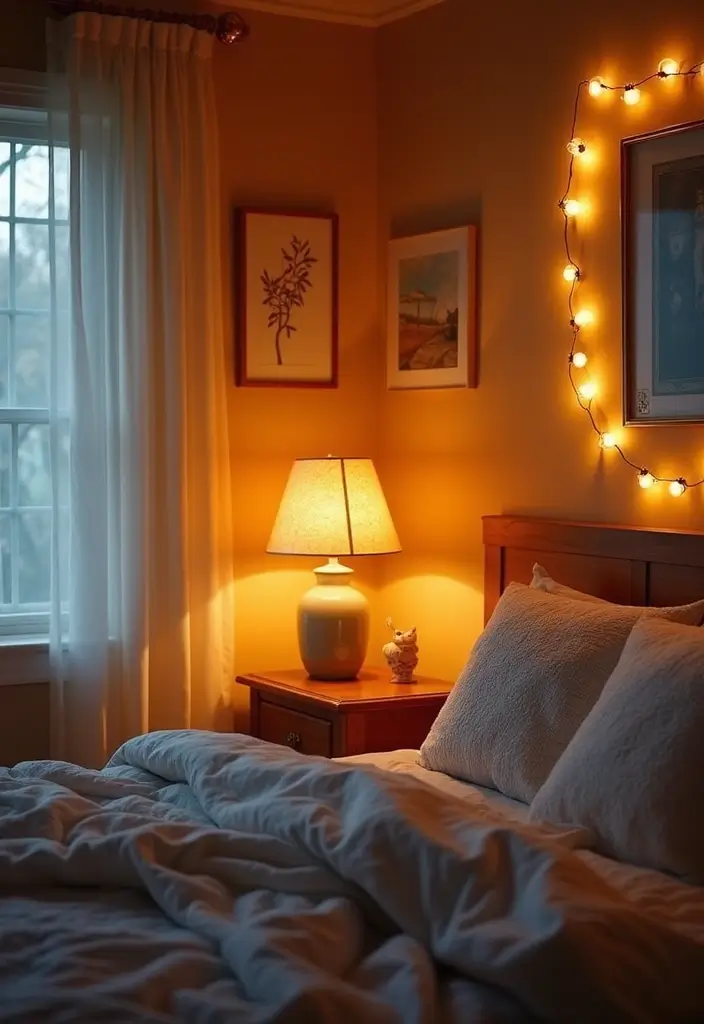
Layered lighting is essential in a divided bedroom, ensuring both areas are well-lit and inviting.
Incorporate a mix of overhead lights, table lamps, and even string lights for a cozy ambiance.
Choose stylish lamps that reflect each child’s personality while ensuring they harmonize with the overall decor.
Dimmable lights can provide flexibility, allowing soft lighting during bedtime or brighter lights for homework sessions.
When planning your lighting, consider:
– Placement of each light source for even distribution.
– Easy access to switches for convenience.
– Fun light fixtures that enhance the shared theme.
12. Thematic Bed Canopies
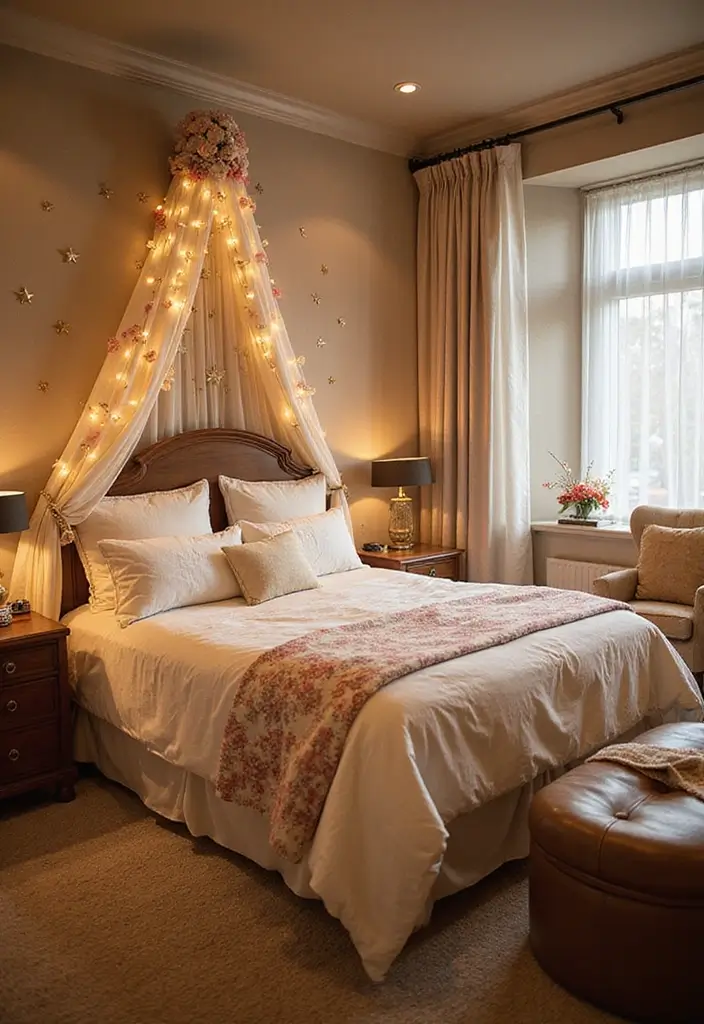
Adding bed canopies can bring a whimsical touch to each child’s area while providing a sense of coziness.
Choose canopies that fit each child’s theme—think floral patterns for one and starry designs for another.
This not only creates a visual barrier but also adds character and comfort to their sleeping spaces.
Using sheer fabric can keep the room feeling open while still providing a sense of privacy.
Here’s how to make the most of canopies:
– Ensure they are safely secured and hung high.
– Use matching colors or patterns for a cohesive look.
– Incorporate fairy lights within the canopy for added magic.
13. Playful Study Nooks
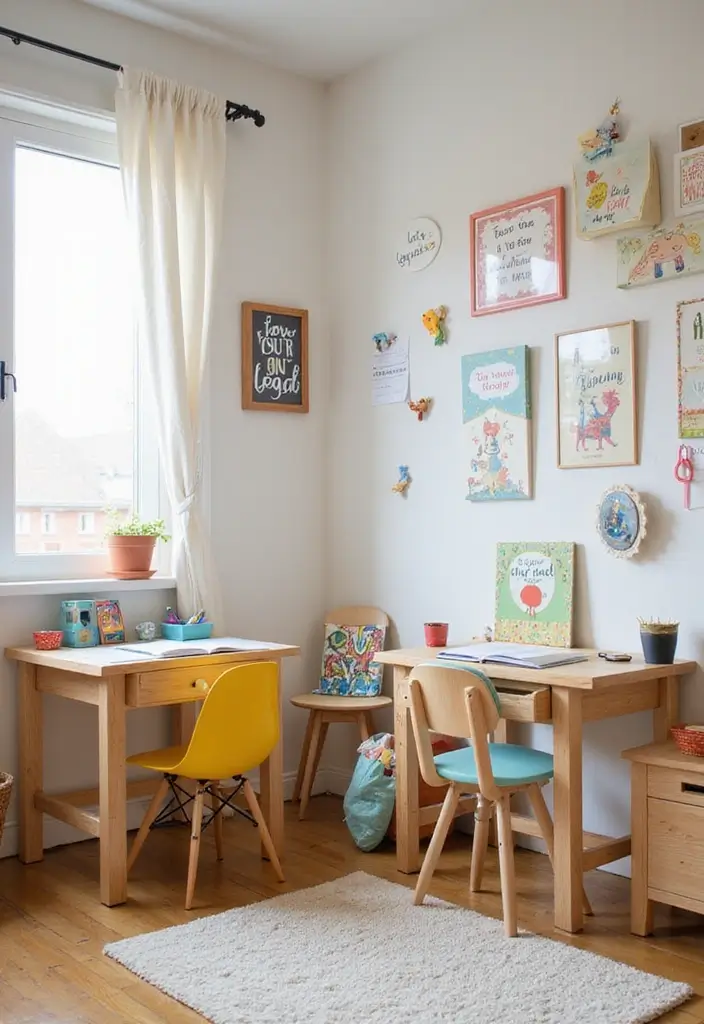
Designing dedicated study nooks can promote a positive learning environment for each child.
Consider placing small desks in separate corners, adorned with colorful accessories that reflect each child’s style.
Incorporate comfortable chairs and adequate lighting to make study time enjoyable.
Adding a shared resource area, such as a bookshelf or art supplies, encourages collaboration and resource sharing.
Remember these tips when designing study nooks:
– Keep the areas clutter-free for focus.
– Use inspiring wall art to motivate.
– Include personal touches like name tags or photos.
14. Compact Wardrobes
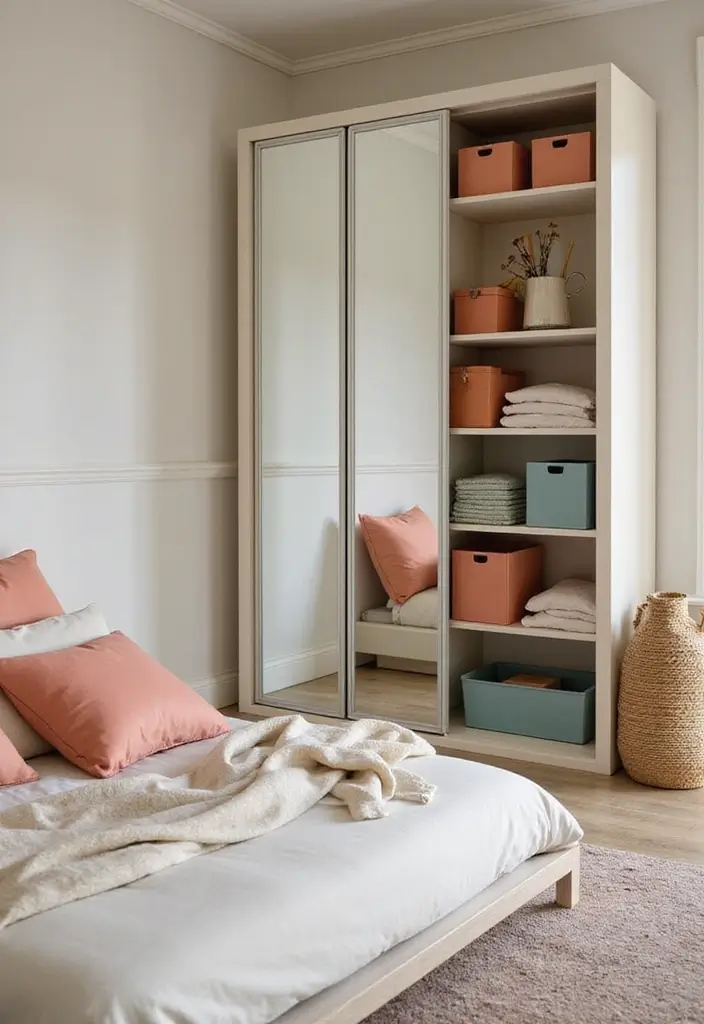
Storage is key in a divided bedroom, and compact wardrobes offer an ideal solution.
Choose wardrobe styles that can fit into smaller spaces while providing ample storage for clothes and personal belongings.
Consider wardrobes with mirrored doors to help visually expand the space.
You could also use organizers within the wardrobes to keep things tidy and easily accessible.
Here are some things to think about when selecting wardrobes:
– Look for modular designs that can adapt to growing needs.
– Coordinate colors with room decor for unity.
– Ensure contents are easily reachable by your kids.
15. Shared Play Spaces
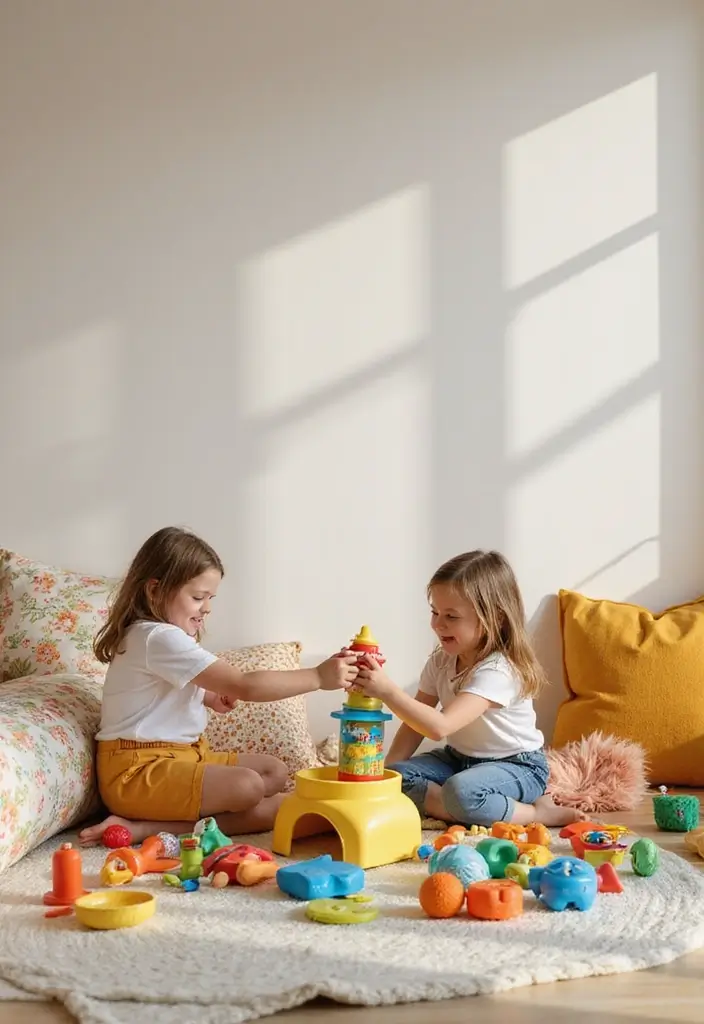
Every good sibling room needs a space for fun!
Designate a small area for play, equipped with toys and games that both kids enjoy.
This shared play area can be located in the center of the room, allowing both children to engage in activities together.
Consider incorporating soft mats or cushions for comfort and safety, making it inviting for endless playtime.
To make this area special:
– Use vibrant colors for toys and play items to keep it lively.
– Ensure all play items are stored neatly when not in use.
– Add a small table for crafts or puzzles.
16. Decorative Bookends
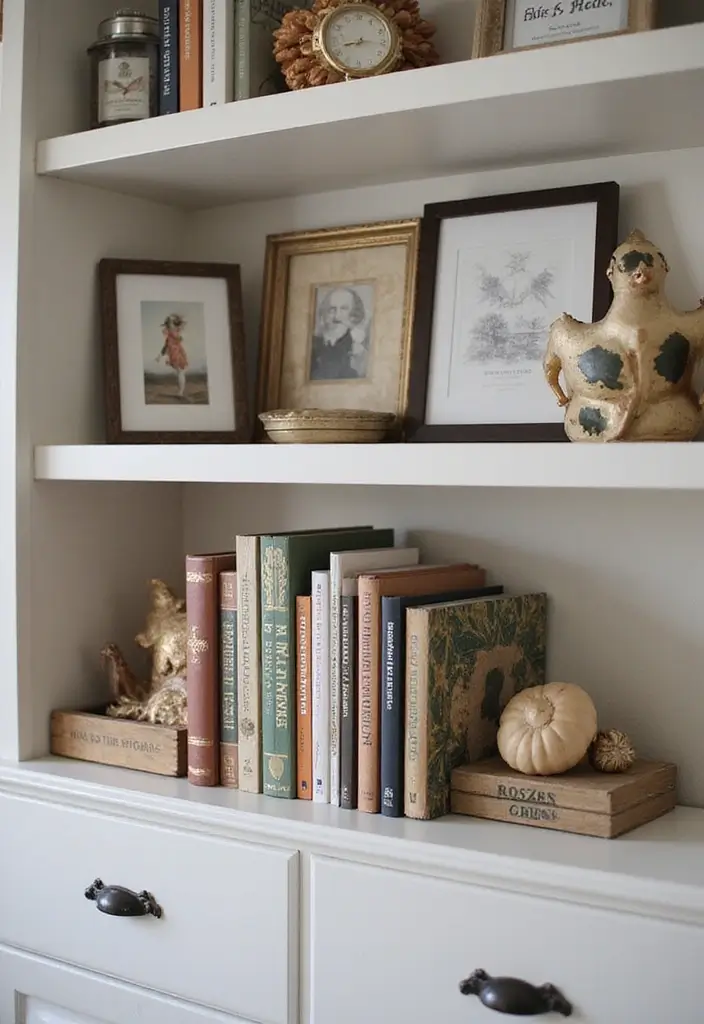
Incorporating decorative bookends can be a practical yet stylish way to keep books organized while adding a personal touch.
Choose unique bookends that reflect each child’s interests—like animal shapes for one and geometric designs for another.
This allows for personalization while keeping the visual flow between the two areas.
Place them on shared shelves or individual desks to foster a shared love for reading.
A few tips for choosing bookends include:
– Ensure they are heavy enough to support the books.
– Coordinate them with the room’s color scheme.
– Involve both kids in selecting their favorites.
17. Unique Accent Walls
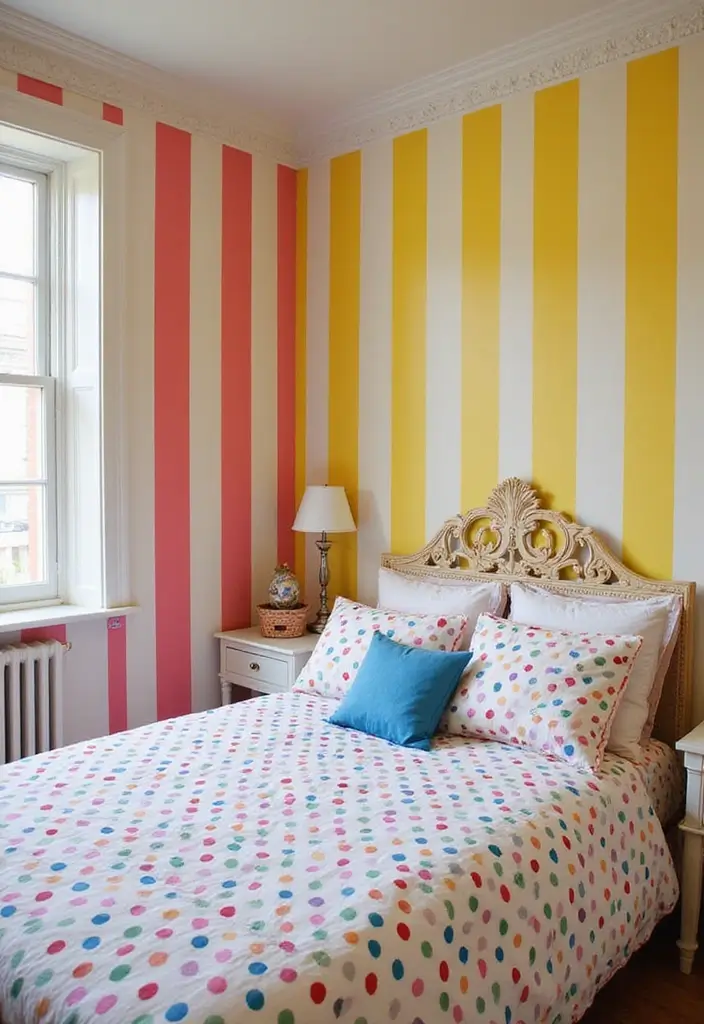
Accent walls can provide a stunning focal point in a divided room.
Consider allowing each child to choose a different color or pattern for their wall, ensuring they complement one another.
Using wallpaper or wall decals can add texture and interest—think fun stripes, polka dots, or even character designs!
Shared elements like a chalkboard section can encourage creativity and interaction.
To enhance this idea:
– Use a consistent border or trim to connect the two styles.
– Highlight shared items like a poster or clock on both walls.
– Keep the overall room theme in mind while selecting patterns.
18. Colorful Ceiling Décor
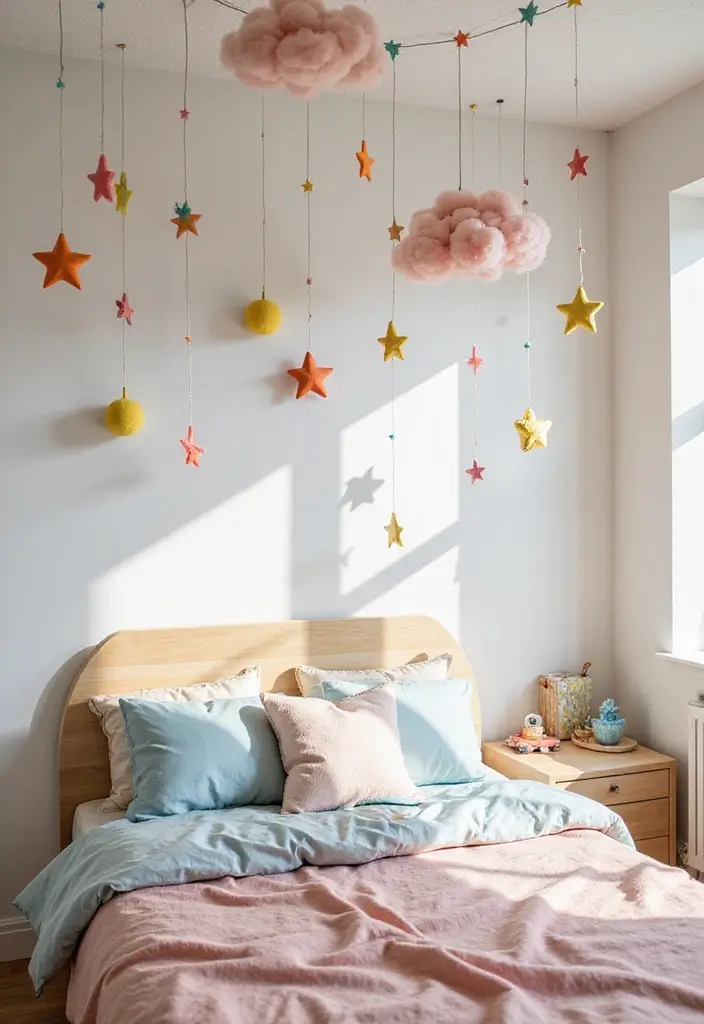
Don’t forget about the ceiling!
Adding colorful decals or hanging decorations can create a whimsical environment.
Consider using stars, clouds, or even a favorite character theme that can be shared.
This not only adds to the fun but also ties the whole room together from top to bottom.
Here are some ideas:
– Opt for removable ceiling decals for easy updates.
– Use hanging mobiles that can sway gently, adding movement to the space.
– Choose patterns that echo the color scheme of the walls.
19. Flexible Hanging Storage
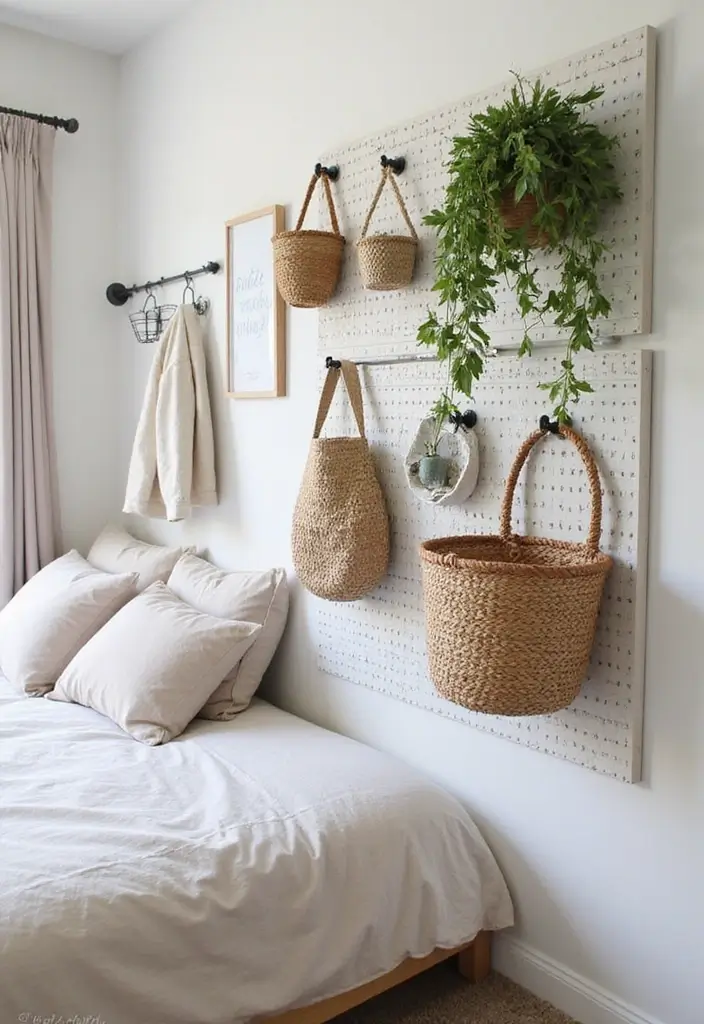
Hanging storage solutions can be a game changer for organizing toys, clothes, or art supplies in tight spaces.
Use wall-mounted baskets or fabric organizers to keep things tidy yet accessible.
These options help free up floor space and make it easier for kids to find their items.
Make sure to label the containers so kids know where everything belongs.
Some ideas for hanging storage include:
– Over-the-door organizers for shoes or accessories.
– Wall-mounted pegboards for hanging art supplies or toys.
– Cloth bins that can be easily moved around the room.
20. Fun Toy Chests
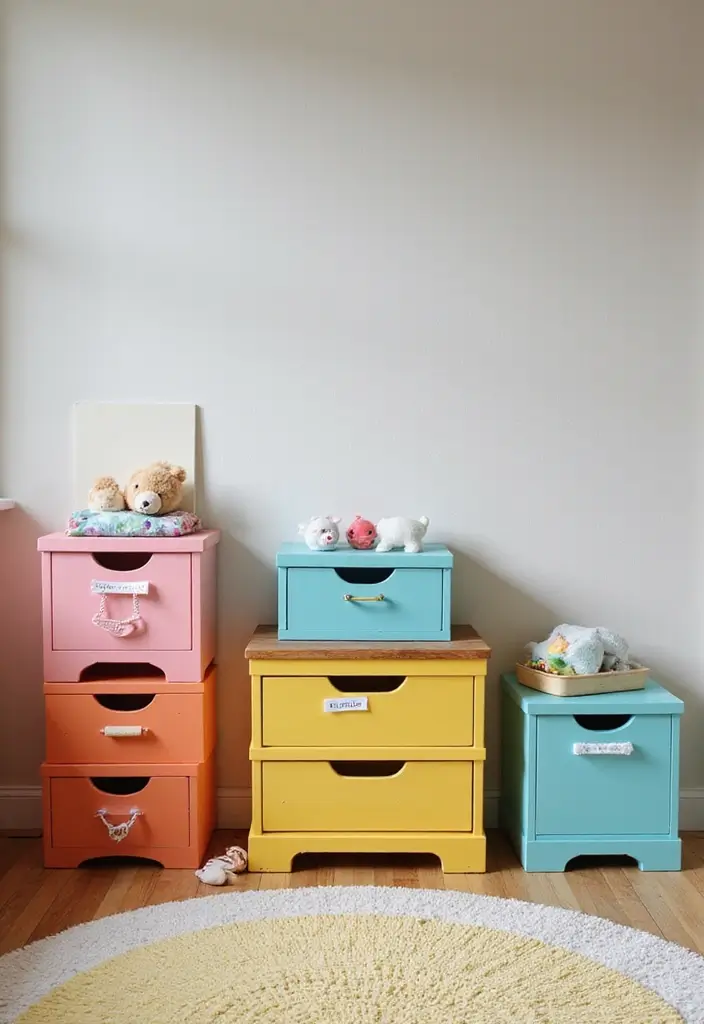
Toy chests can add a playful touch while keeping the room organized.
Choose chests that not only fit the theme but also have fun shapes or colors.
Each child can have their own designated toy chest to keep their items separate while still being cohesive in design.
Consider choosing chests with lids for safety and additional seating options.
Here’s how to make the most of toy chests:
– Add labels for easy identification of each child’s toys.
– Opt for lightweight designs for easy maneuvering.
– Include a mix of open and closed storage for versatility.
21. Customizable Play Mats
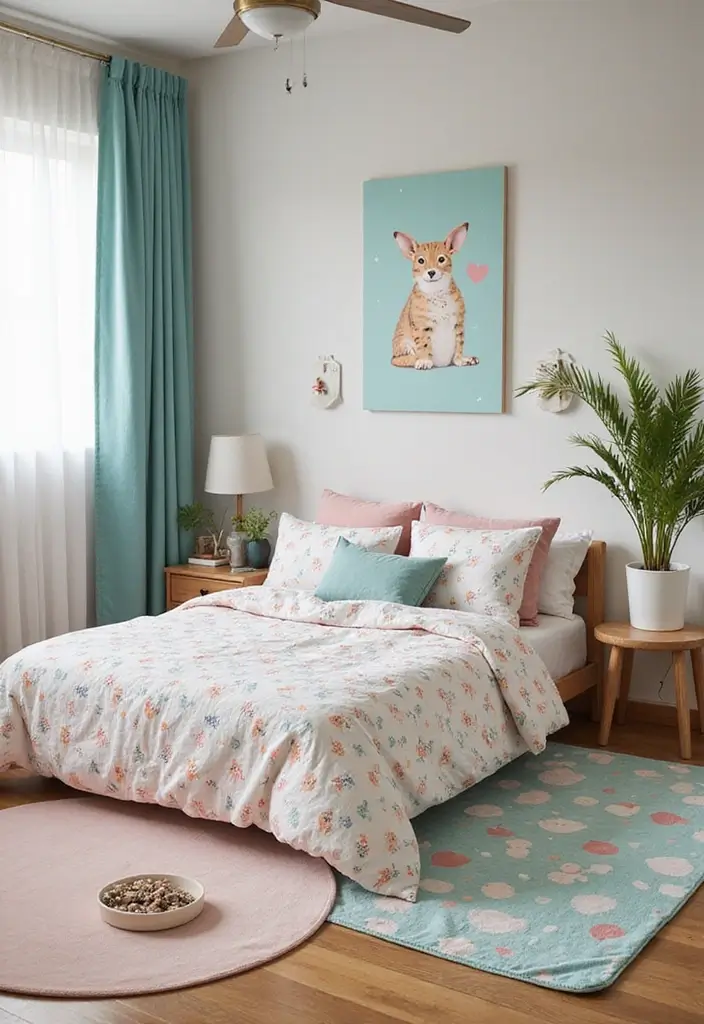
Play mats offer a soft space for kids to engage in activities, and customizable options take it a step further.
Choose mats that can be personalized with names, favorite colors, or themes.
This creates an inviting play area that feels special to each child while still being suitable for shared use.
Make sure the material is easy to clean and durable for years of fun.
Here are some customizable options:
– Interlocking foam tiles that can be arranged in different patterns.
– Soft fabric mats that can be embroidered with personal touches.
– Theme-based mats that encourage imaginative play.
22. Joint Project Spaces
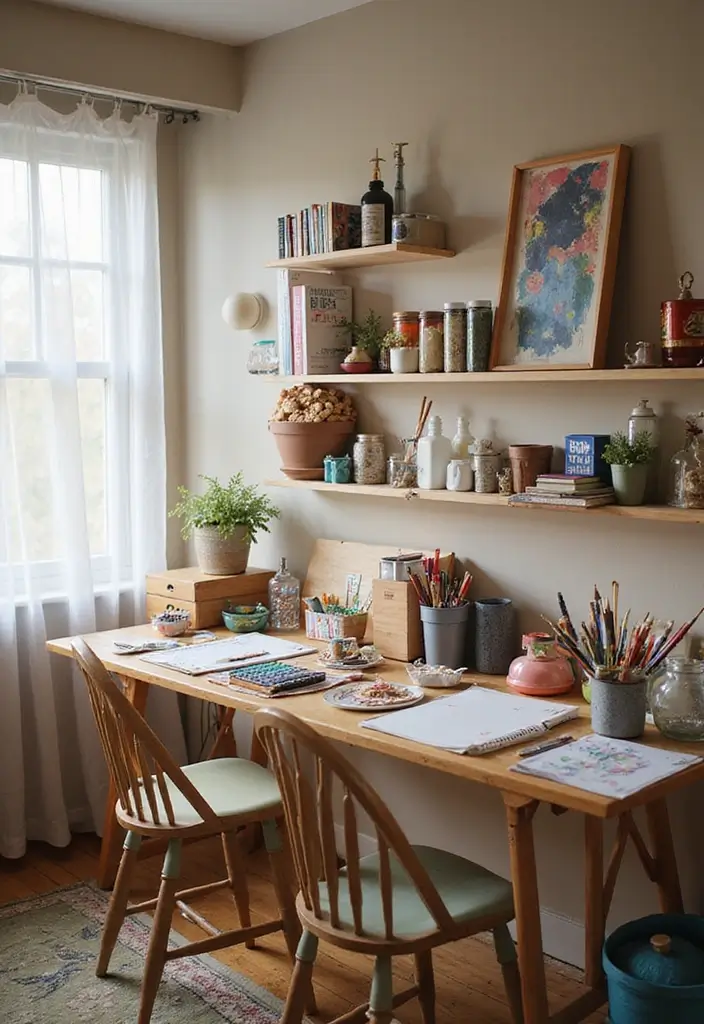
Encouraging collaboration can be a beautiful bonding experience for siblings.
Set up a shared project space equipped with art supplies, crafts, or building blocks.
This can be a dedicated table free of distractions, allowing kids to work together while having fun.
Using a clear container to store supplies promotes organization and easy access.
Here are some tips to make this work:
– Designate specific times for joint projects to avoid conflicts.
– Use a large mat beneath to contain messes.
– Encourage sharing and teamwork by creating joint art pieces.
23. Under-Bed Storage Solutions
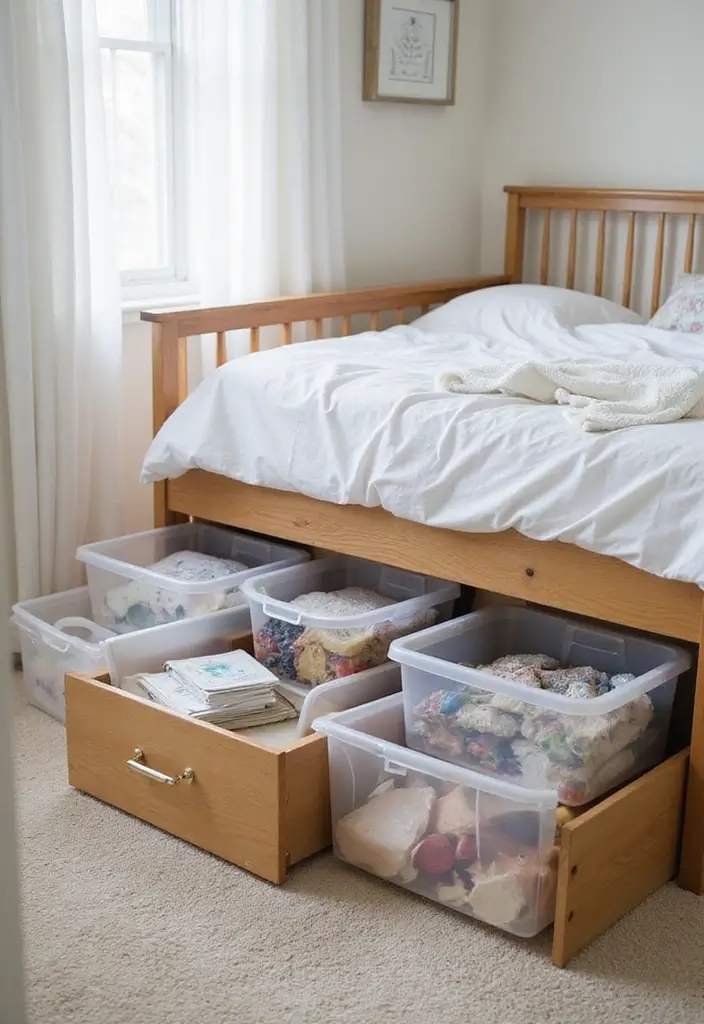
Utilizing under-bed space is a fantastic way to maximize storage in a shared bedroom.
Choose beds with built-in drawers or use rolling bins for easy access.
This storage solution helps maintain an uncluttered look while providing ample room for toys, clothes, or seasonal items.
Be sure to involve the kids in deciding what should be stored here to keep the organization personal.
Consider these ideas:
– Use clear bins for visibility.
– Label everything for easy identification.
– Rotate items seasonally to keep the space functional.
Maximize that under-bed space! With the right storage solutions, you can keep toys and clothes out of sight and keep your divided bedroom kids’ area looking tidy and organized.
24. Cozy Reading Nooks
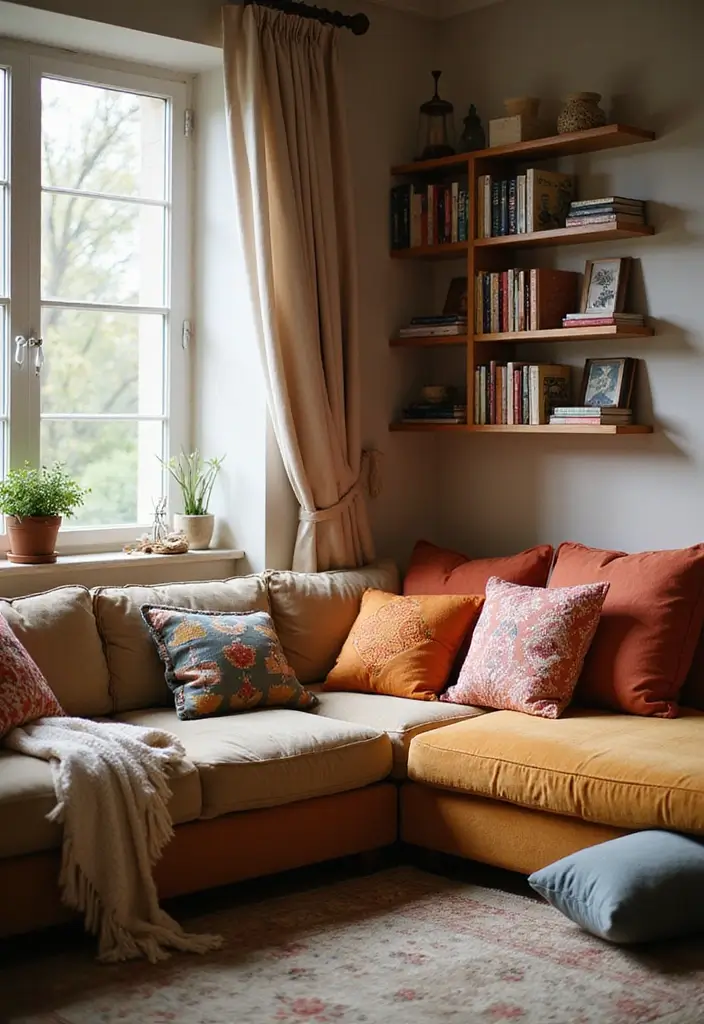
Creating a reading nook can encourage a love for books while providing a cozy retreat.
Designate a space with comfy bean bags or cushions, along with a small bookshelf filled with favorite reads.
Adding soft lighting, like a floor lamp or fairy lights, can enhance the atmosphere, making it inviting for quiet time.
Consider incorporating a shared blanket for coziness.
Here are some tips for a successful reading nook:
– Ensure it’s positioned away from distractions.
– Use colorful cushions to tie in with the room’s decor.
– Rotate books frequently to keep it interesting.
“Transform a corner into a cozy reading nook, and watch your kids’ love for books blossom! A few cushions, soft lighting, and a shared blanket can create a magical retreat in their divided bedroom.”
25. Multi-Functional Ottoman Seating
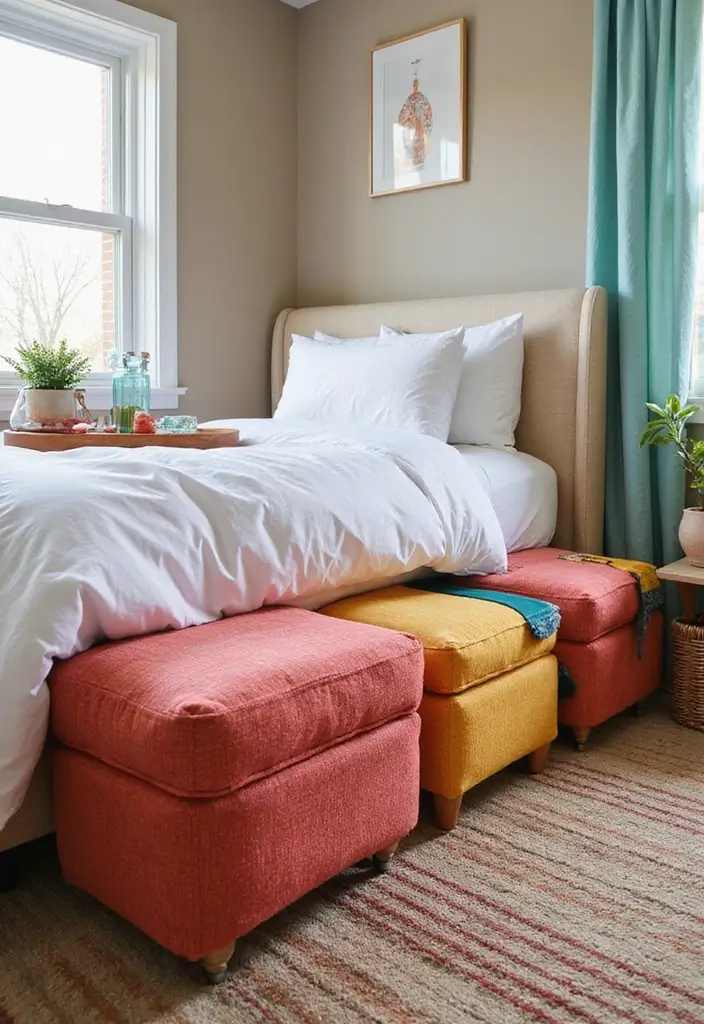
Ottomans can serve multiple purposes in a shared bedroom, acting as both seating and storage.
Choose ottomans with removable tops that can hold toys or blankets, keeping the room organized.
Pick colorful designs that will appeal to both children, blending functionality with fun aesthetics.
This versatile furniture piece can be used for seating, as a footrest, or even as a makeshift table for games.
Here are some tips for incorporating ottomans:
– Ensure they are lightweight for easy movement.
– Coordinate with the room’s color scheme.
– Encourage the kids to help decide what goes inside.
26. Interactive Wall Games
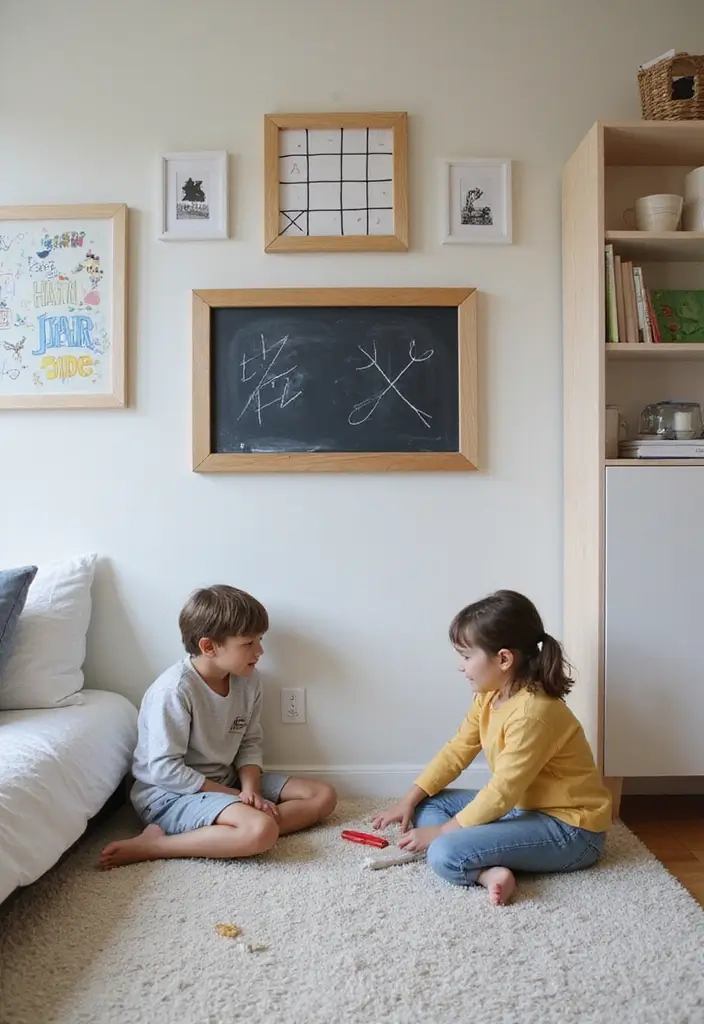
Incorporating interactive wall games can be a unique way to engage both kids while also enhancing the room’s decor.
Consider installing a chalkboard or whiteboard where they can draw, write, or play games together.
This type of wall feature fosters creativity and can change over time, growing with their interests.
You can also use wall-mounted games like Tic Tac Toe or even a simple magnetic board for added fun.
Here are some suggestions:
– Ensure the games are age-appropriate.
– Keep the designs clean yet colorful.
– Encourage friendly competition to foster bonding.
27. Colorful Nightstands
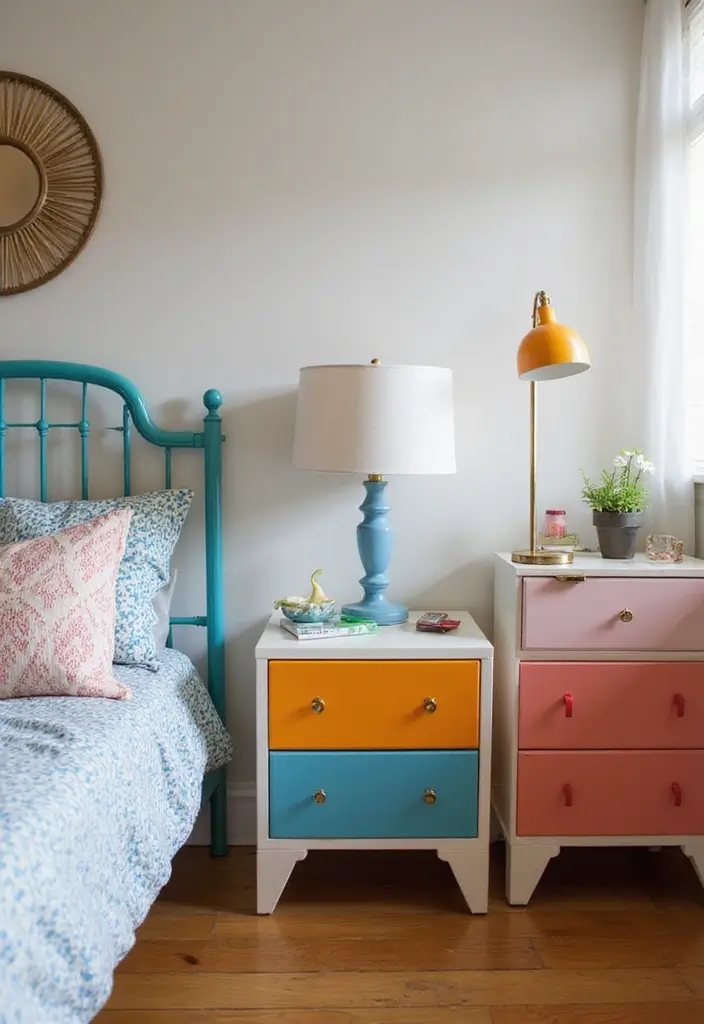
Nightstands can be functional as well as colorful additions to a divided bedroom.
Choose two matching nightstands in different colors, allowing each child to express their preference while maintaining a cohesive look.
Incorporate fun lamps or decorative items that reflect their interests.
This arrangement not only enhances their personal space but keeps essentials like books and nightlights close at hand.
Here are some tips:
– Coordinate the nightstands with the bedding.
– Use fun accessories that can be swapped.
– Ensure they have enough surface area for essentials.
28. Functional Wall Hooks
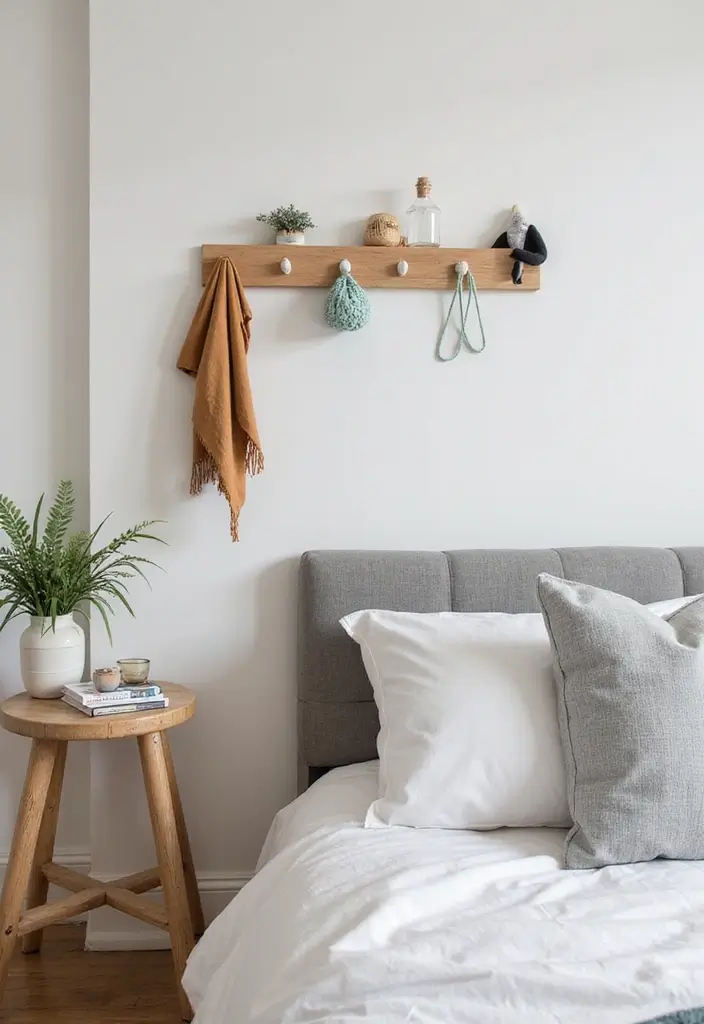
Wall hooks are a smart way to keep things organized in a shared bedroom and add a playful element to the decor.
Choose hooks that match each child’s personality—like animal-shaped hooks for one and geometric designs for the other.
This easy solution for coats, bags, or hats helps maintain a tidy appearance while providing a space for personal items.
Consider placing them near the door or within reach of the beds for convenience.
Here are some pointers:
– Ensure they are securely mounted.
– Label each hook for easy identification.
– Use matching colors to keep a unified look.
29. Seasonal Decor Swaps
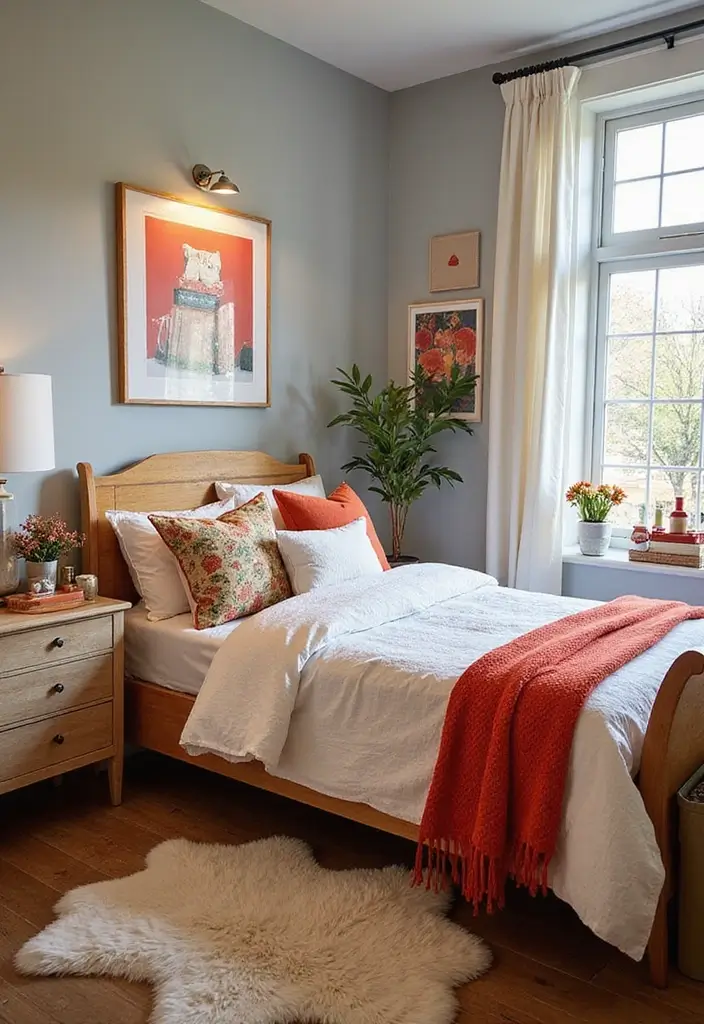
Seasonal decor swaps can keep the bedroom fresh and exciting throughout the year.
Allow each child to select seasonal decorations, whether it’s festive items during holidays or seasonal artwork.
This idea adds a dynamic touch to their shared space, letting them express creativity and celebrate different times of the year together.
Incorporate a designated area for storage of seasonal decorations to keep things organized.
Here are some tips for successful seasonal swaps:
– Encourage kids to decide on new themes together.
– Create a rotation schedule for swapping decor.
– Use clear bins for easy access to seasonal items.
“Transform a divided bedroom into a creative haven! Seasonal decor swaps let kids express their personalities and celebrate together, making each corner feel fresh and united all year round.”
Conclusion
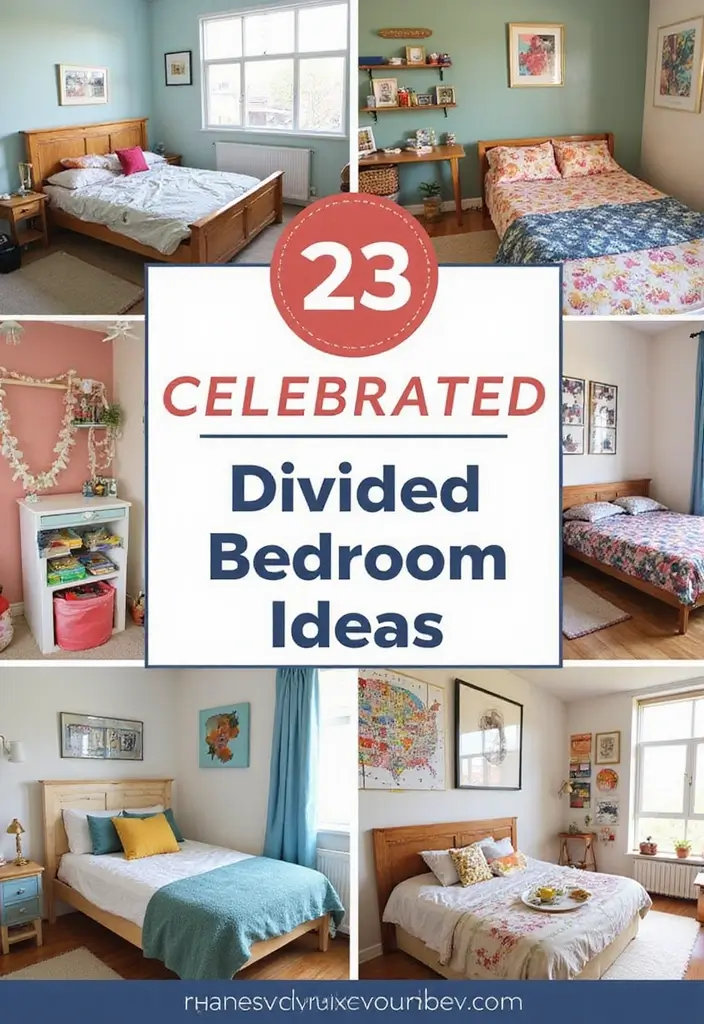
Designing a divided bedroom for kids is all about balance.
By incorporating personal touches and cohesive elements, you can create a space that’s both functional and fun for siblings.
From colorful decor to organized layouts, the ideas shared here can inspire a harmonious yet playful environment.
So, roll up your sleeves and start crafting a shared space that feels like home for both kids!
Frequently Asked Questions
How Can I Create a Divided Bedroom That Reflects Both Kids’ Personalities?
One of the best ways to ensure that both kids feel at home in a divided bedroom is by using personalized bedding and decor. Think about matching styles but with different colors or patterns that showcase each child’s individual taste. You can also incorporate themed half-walls or unique accent walls to let their personalities shine while maintaining a cohesive look!
What Are Some Space-Saving Furniture Options for a Shared Kids Bedroom?
Space-saving furniture is essential in a shared kids bedroom! Look for multi-functional pieces like beds with built-in storage, compact wardrobes, or ottomans that double as seating and storage. These options help keep the room organized while providing ample space for both children to play and study comfortably.
How Do I Choose the Right Room Divider for a Divided Bedroom?
Choosing the right room divider can be a fun process! Consider creative options like bookshelf dividers filled with books and toys, or decorative screens that add a playful touch. The key is to select a divider that complements both kids’ styles while providing them with a sense of personal space.
What Color Schemes Work Best for a Divided Kids Bedroom?
To create a harmonious yet individualized space, opt for a matching color palette that reflects both kids’ tastes. Soft pastels or vibrant jewel tones can be visually appealing while allowing each child to express themselves. You can also use colorful wall art that each child loves but ensures they complement each other for a unified look.
How Can I Encourage Cooperation and Bonding in a Divided Bedroom?
Fostering cooperation and bonding in a divided bedroom can be achieved by creating shared play spaces and joint project areas. Set up designated zones where both kids can collaborate on crafts or games, encouraging teamwork while still respecting their individual spaces. This way, they can enjoy their own areas but also have quality time together!
Related Topics
divided bedroom kids
shared room decor
kids bedroom design
space-saving furniture
colorful bedroom ideas
organized kids spaces
creative room dividers
personalized bedding
dual desks
layered lighting
compact storage solutions
fun furniture
